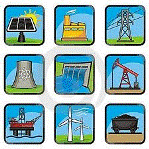Department of Agricultural Economics: Undergraduate Research
Date of this Version
Fall 12-18-2018
Document Type
Article
Citation
Op-Ed from ENSC 230. Energy and the Environment: Economics and Policy, University of Nebraska-Lincoln, Department of Agricultural Economics, Fall 2018
Abstract
Nebraska is the only state that has every electric utility publicly owned. This gives Nebraska a unique advantage of serving its customers rather than out-of-state shareholders. Since the goal is cheap power instead of profit margins and keeping shareholders happy, Nebraska rates are 16.8% below the national average. (EIA.gov)
So what does that mean for Renewable sources of electricity if cheap power is the main focus? Does cheap but dirty coal reign supreme?
Some might think that’d be a death blow for Renewables. Renewables (wind, solar, and hydro-electric power) are expensive and not profitable, right? WRONG.
Renewables make up just over one third (33.5%) of retail sales for Nebraska Public Power District (NPPD) and almost one fifth (18.6%) of all electricity consumed in Nebraska. (NPPD.com)
How is this possible? Politics can be ignored. It comes down to basic supply and demand.
As demand for electricity continues to grow in Nebraska, consumers of electricity are (and have been for some time) demanding that more of their energy comes from Renewable sources. This demand can be seen north of the state’s capital. Lincoln Electric System (LES) put up the two small wind turbines in response to consumer demand way back in the late 1990s when Bill Clinton was still in office and gasoline was $1.14 a gallon. This was before “going green” hit the mainstream, and over 7 years before Al Gore’s An Inconvenient Truth sounded the public alarm bells on Climate Change.
Back then the wind turbines were more of an experiment than anything, but the concept was popular with customers. Nowadays the economics make sense. A lot of sense – as in “a third of my energy portfolio should be Renewables” amount of sense, according to LES.
An energy portfolio is where an electric utility buys its energy from. LES’s sources its electricity from about a third Renewable sources, a third natural gas, and a third coal.
There is a clear demand for clean energy, but what about the supply? How much of Nebraska’s electricity generation is from Renewables?
Only 10-15% of Nebraska’s electricity comes from Renewables like wind, solar, and hydro power. About two-thirds (60%-66%) is coal. 15%-20% is actually nuclear power, and the remaining few percentage points are natural gas. Coal is abundantly supplied on trains from Wyoming, which is reflected in these percentages. (EIA.gov)
But wait… if Renewables are so great, why isn’t it a bigger percent of Nebraska’s energy portfolio? Why not 50%, 75%, or even 100%?
The main problem with Renewables is the difference between base loads and supplemental loads. Base load supply minimum power that’s always needed. It can’t fluctuate (unless you want a blackout). Critics of Renewables argue this is a problem when the sun isn’t shining or the wind isn’t blowing. If Renewables were to become a base load in the future, first there would need to be major attitude shifts, infrastructure updates, and policy changes, but right now they work just fine for large supplemental loads.
Some argue that coal is still cheaper than Renewables. The only way this is true is if you count the multiple decades the coal plants have been open. This in effect counts all the profit they’ve made over that time and uses it to lower marginal costs of electricity production. When comparing new builds of coal-fired electricity versus Renewable electricity, Renewable electricity is much cheaper to build. This is incredibly important existing coal plants nationwide are decades old and nearing retirement.
So from an economic perspective, Renewables check out. But there’s even more benefit there beyond a dollar sign.
Renewables do no generate any harmful emissions when generating their power. They don’t generate Carbon Dioxide that contributes to Climate Change or Sulfur Dioxide that contributes to Acid Rain or Nitrous Oxides that contributes to Smog. All of that doesn’t happen when Renewables are used. Better air quality leads to lower health problems, less doctor visits, less sick days, and even a better economy. Everyone wins when there’s less pollution.
If Renewable energy can work in a conservative state like Nebraska, it should be able to work anywhere. Renewables makes sense from every perspective and should be implemented immediately.
Included in
Environmental Indicators and Impact Assessment Commons, Natural Resources and Conservation Commons, Oil, Gas, and Energy Commons, Other Environmental Sciences Commons

